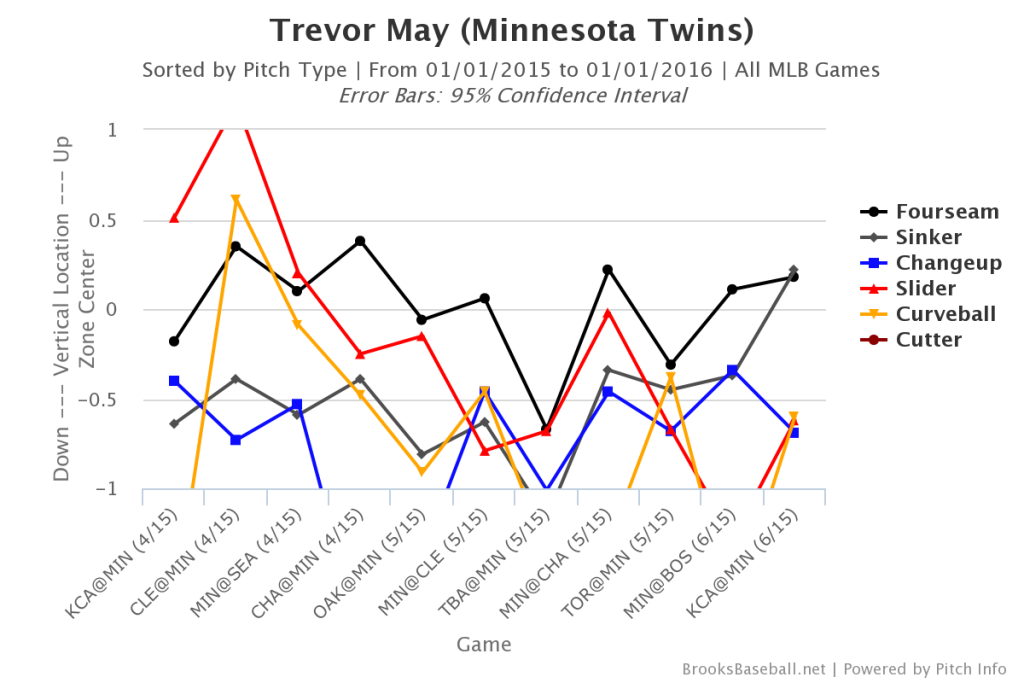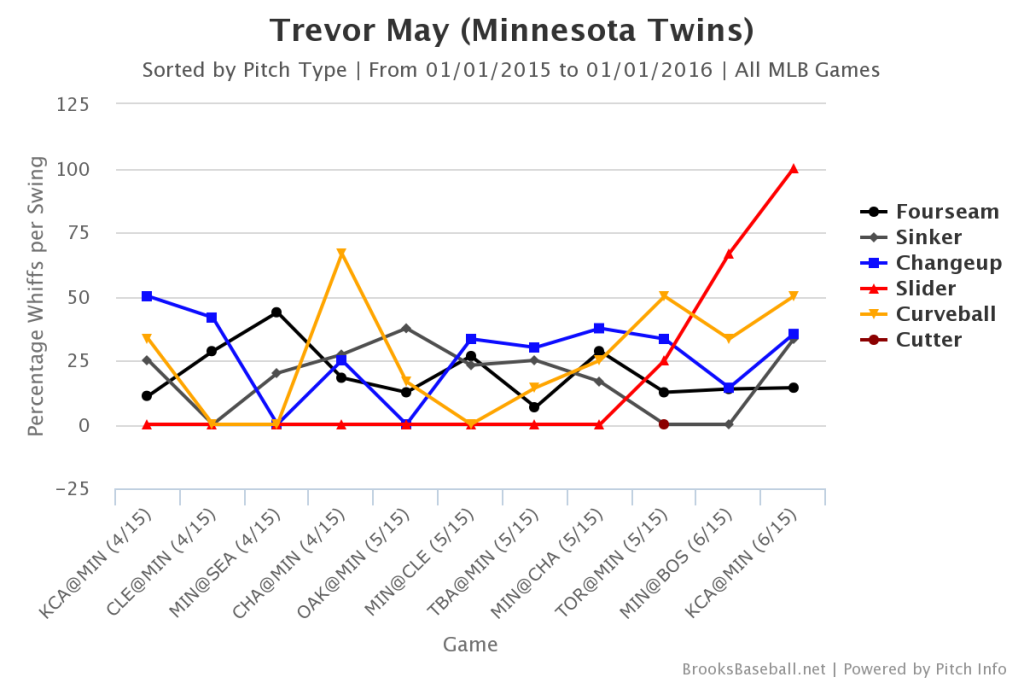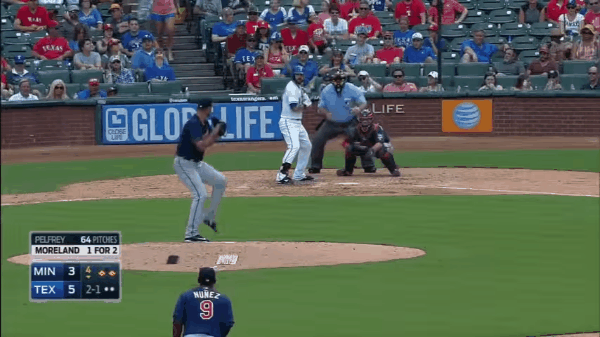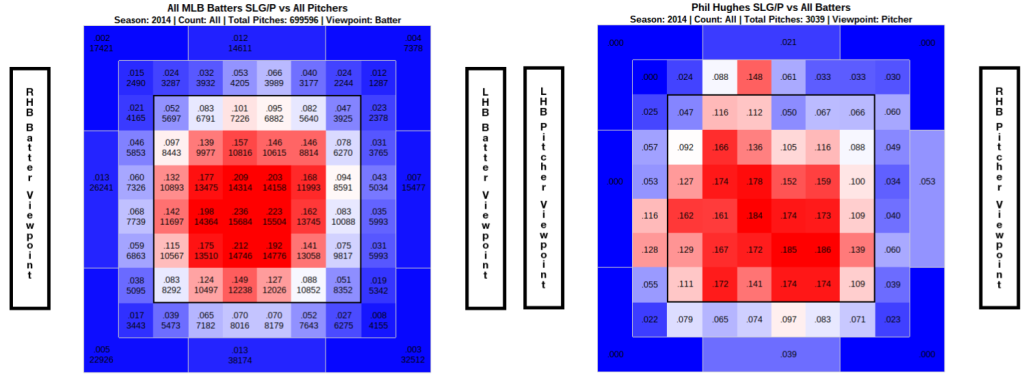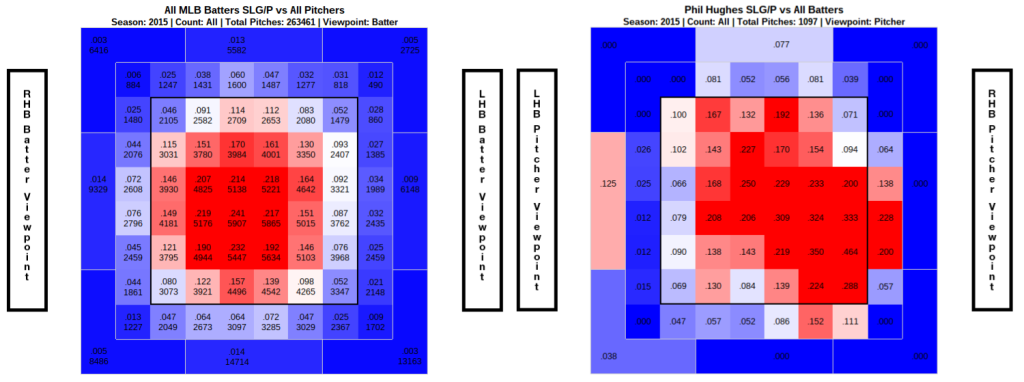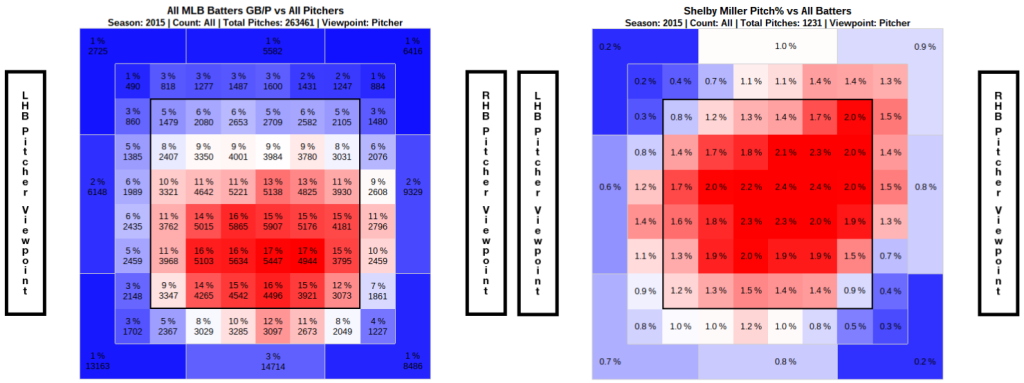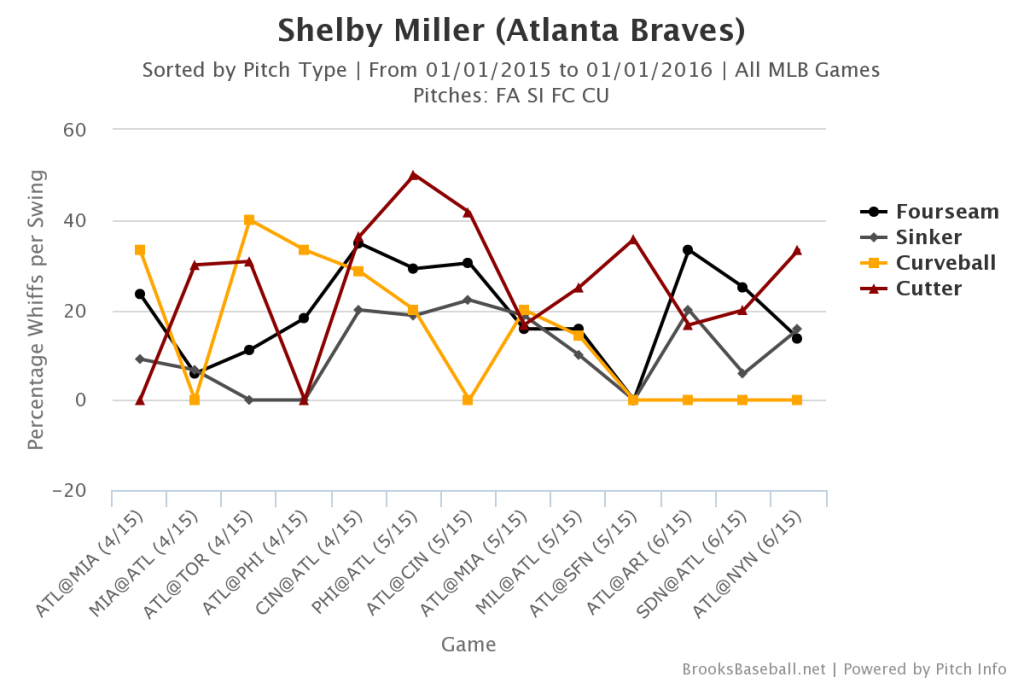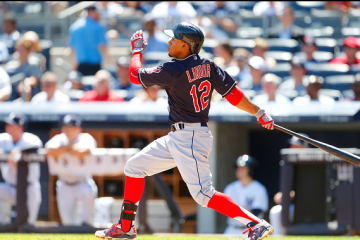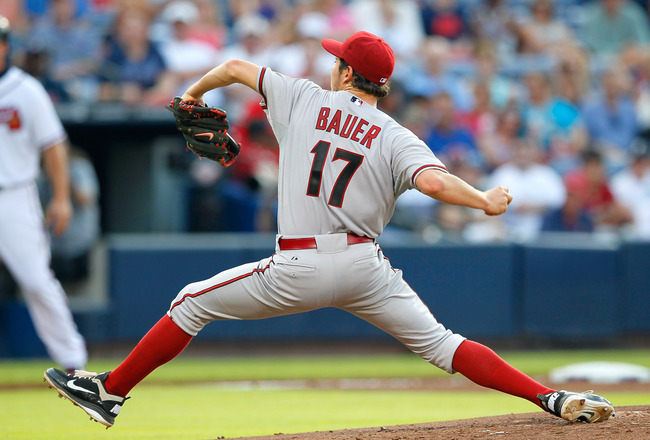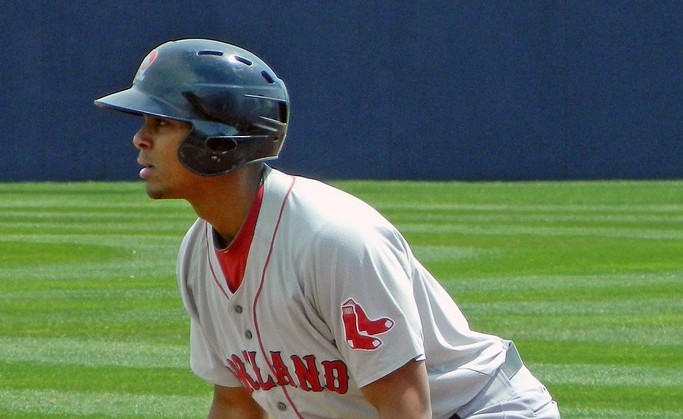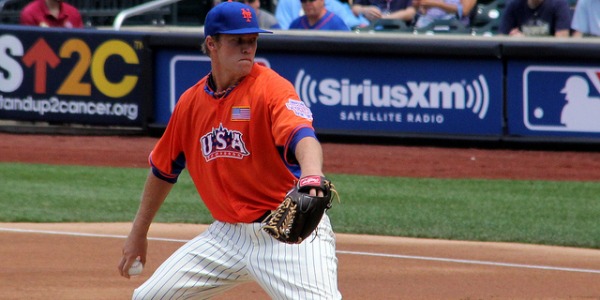2015 Fantasy Baseball Week 11 Waiver Wire: 3 to Catch, 3 to Cut, 3 to Keep
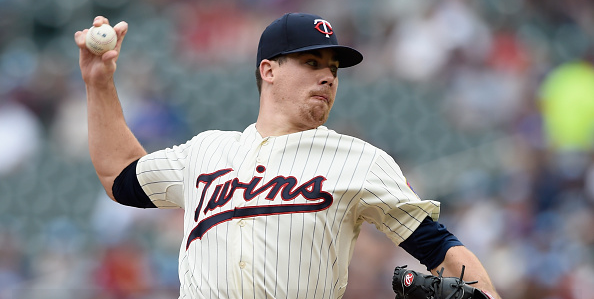
In the Week 11 edition of fantasy baseball 3×3, we’re buying Trevor May, selling Addison Russell, and staying the course with Marcus Semien.
There are plenty of waiver wire columns out there that provide an exhaustive list of the most added players in fantasy leagues. This isn’t one of them. Here, we’ll run down a few of the most interesting players for fantasy owners, with perspective on who deserves your attention, who deserves your patience, and who deserves to go straight to bed without dessert.
Any questions, thoughts? Hit me in the comments or on Twitter.
3 TO CATCH
Players to be picked up; available in most standard leagues
Trevor May | Minnesota Twins | SP
Winners of only two of their last nine, the enigmatic Minnesota Twins are beginning to unravel. The facade of cluster luck is beginning to fade. Now is a good time for fantasy owners to sell off some of the pieces that have been critical to Minnesota’s run, but there’s one Twin in particular who’s actually been on the upswing lately.
Trevor May has been dominant over the past few weeks. In his last four starts, he’s racked up a 2.77 ERA and 2.03 FIP, struck out nearly 30% of batters while walking only 4%, and kept 50% of batted balls on the ground, per FanGraphs. His FIP during that time period is better than Chris Archer’s league-leading mark. His strikeout rate during that period would be among the top ten in baseball.
It’s incredibly impressive, but it’s only four starts. If I’m going to radically change my opinion (or yours) on May, it’ll take a sign of real change or development in his arsenal.
Ah, well, there you go… The chart is kind of funky, but it’s the only measureable change I can find in in May’s slider, which has been the key to his dominance. He’s been able to bury it down the zone more consistently in recent start, which has made the pitch damn near untouchable.
Out of seemingly nothing, May has found a deadly weapon. He’s not throwing the slider significantly more often lately, but when he does throw it, hitters don’t stand a chance.
His strikeout rate won’t be top ten all season, nor will his FIP hover around 2.00, but both can be above average. With this slider in his quiver, he can perform well beyond his projections and be a valuable contributor, especially in AL-only formats.
To pick him up, I’d drop: Chris Young, Nick Martinez, Chris Tillman
Mitch Moreland | Texas Rangers | 1B
Mitch Moreland has always had a bit of a catnip effect on me. Though his entire career has been riddled by injuries and inconsistencies, I can’t help but be romanced by a talented and perennially available power bat who plays half his games in Texas. Moreland has been sizzling lately, and I’m all the way back in.
Over the last month, Moreland has slashed .303/.345/.560 with seven homers, seven doubles, and 19 RBI. Sure, he’s had a .342 BABIP during this stretch, but it’s not like burying opposing pitchers under a hail of bloopers. He’s earned every hit; only 19 batters have consistently made harder contact. He ranks 39th in baseball in batted ball distance, averaging over 296 feet on his fly balls and line drives, per Baseball Heat Maps.
My man does not get cheated; six of his eight homers have travelled at least 400 feet, per ESPN’s Home Run Tracker, and this gem is among the longest we’ve seen this season.
It’s been an incredible stretch that shows just what a fully healthy Moreland is capable of. He continues to be very patient at the plate, waiting for pitches he can drive and doing all sorts of damage when he gets them. Moreland is an add for power-hungry owners in any format.
To pick him up, I’d drop: Mike Napoli, Joe Mauer, Billy Butler
Byron Buxton | Minnesota Twins | OF
Byron Buxton is going to be really good. It might not happen this season, but then again, it might. Elite talents like him often don’t need a whole lot of runway to get airborne. So the question with Buxton isn’t about whether you should try to add him to your squad, but how desperately you should chase after him.
In redraft formats, the answer is pretty simple. Pay for a chance at greatness, but don’t pay for guaranteed greatness. In the vast majority of formats, I’m not willing to completely empty my FAAB vault for him. Sure, I’ll make a generous offer, but he’s not a guaranteed savior. I’ll drop an expendable, low-ceiling asset to grab Buxton, but I’m not willing to part with a proven player who just happens to be on a cold streak. If the last outfielder on my bench is Leonys Martin, I’d drop him in a heartbeat to grab Buxton because, at the very least, I can expect Buxton to replicate the speed I would have gotten from Martin. And even if he doesn’t, I can easily replace those steals with another waiver claim later on in the season. But if the cost for Buxton is a slumping star, somebody like Christian Yelich, I’d certainly hesitate. There’s a significant chance that Buxton won’t provide the level of production that I’ve seen Yelich deliver at the major league level.
Buxton is a massive talent, but I’m not ready to put him alongside Kris Bryant in the “nothing left to learn in the minors” club. Forget the fact that he hasn’t played a single game in Triple-A, Buxton hasn’t even played half a season in Double-A! There’s going to be a big adjustment period for him as a big leaguer. He may well figure it out, but I’m adjusting the price I’ll pay on the odds that he doesn’t.
To pick him up, I’d drop: Billy Burns, Gregory Polanco, Torii Hunter
3 TO CUT
Players to be traded or dropped, depending on the depth of your league
Phil Hughes | Minnesota Twins | SP
I was really high on Phil Hughes entering this season, but with the way that he’s performed through the first third of the year, I’m just about ready to throw in the towel. I somehow simultaneously feel like a should have known this would happen and that there’s no way I could have predicted it.
Last season, Hughes made a significant change in his approach. After largely limping through the first few seasons of his MLB career, he dialed up the aggressiveness and pounded the strike zone on his way to a historically low walk rate, challenging hitters to earn their way on base and generally succeeding in preventing them from doing so. He didn’t miss a ton of bats, nor did he generate a ton of ground balls, but he kept the basepaths clear and didn’t allow many home runs, forcing opposing offenses to string several hits in a row in order to get on the board. He was a completely new and devastatingly successful Phil Hughes, and his newfound success was sustainably rooted in real changes in the way he attacked hitters.
He’s been essentially the same pitcher this season, in terms of approach. His arsenal is mostly the same; a quick perusal of Brooks Baseball shows he’s getting a bit more heat on a couple of pitches and a bit less bite on one or two. He’s still hammering the strike zone and limiting walks, but whatever pixie dust he applied last year to limit home runs seems to have evaporated over the winter.
In 2014, Hughes was much better than average at limiting damage against pitches thrown in the middle of the strike zone (click the chart to enlarge).
This season, he’s regressed back to about league average in those areas.
And there’s the difference between a 3.52 ERA and a 4.50 ERA. It’s looking more and more like last year’s run was fueled by a great deal of luck, luck that doesn’t seem to be coming back anytime soon.
He probably won’t be this bad all season, but if even if he improves, he’ll still be a pitcher with a strikeout rate around league average and an ERA around 4.00. His WHIP will likely be pretty good, but that’s not enough to make Hughes a top fantasy starter.
Shop him around to see if you can get any value in a trade, but if there are higher upside pitchers on your waiver wire, feel free to cut him outright in mixed leagues.
I’d trade/drop him for: Clay Buchholz, Hector Santiago, Ian Kennedy
Addison Russell | Chicago Cubs | 2B/SS
Amid all of the Buxton, Lindor, and Correa-related chaos, we’ve kind of forgotten about ‘ole Addison Russell, one of the earliest dominoes to fall in this spring’s aggressive prospect roundup. Seeing this kind of talent confined to the shadows often signals an opportunity to buy low, but in Russell’s case, I see an arbitrage opportunity for the seller.
There’s a common narrative around young players that basically states that major league pitchers will challenge a rookie until he proves that he can beat them. Russell entered the big leagues with a reputation as one of the best pure hitters in the minors, but even for him, this narrative seems to be true. He’s seeing first-pitch strikes on 69.3% of his plate appearances, a mark that would rank eighth in baseball if he had enough plate appearances to qualify.
And he hasn’t done much to dissuade pitchers from attacking; Russell chases and misses more often than the average hitter, with contact rates that belie his scouting report.
Again, this isn’t to say that he won’t develop into a great hitter, rather than we’ve seen about 180 plate appearances of him not being a great hitter. His Depth Charts projection backs this up, pegging him for a .240 average the rest of the way, with eight home runs. It also calls for Russell to snag seven steals the rest of the season, but as he’s run just four times (and been caught on three) in 45 games, I’m not banking on that one to come true. He’s an excellent player, but not yet an excellent fantasy assets.
Still, less than 200 plate appearances into his big league career, he’s still mostly shrouded in the air of mystery that’s making Lindor and Buxton so attractive.
When waivers run this week, there will be one or two very happy owners in every league, the lucky managers who claim the prize of Buxton or Lindor. But there will also be a handful of very disappointed owners, a few who grabbed for the brass ring and came up short. And they’ll be looking for a consolation prize. Based on the prospect rankings heading into this season, I’d expect that Russell ought to make an excellent participation trophy for those folks.
After your league’s next transaction period runs, shop Russell around.
I’d trade/drop him for: Carlos Correa, Jean Segura, Francisco Lindor
Shelby Miller | Atlanta Braves | SP
On the surface, it looks like a walkover win for Atlanta in the Jason Heyward/Shelby Miller deal. Heyward has struggled to find his footing in St. Louis, while Miller is nipping at the heels of the National League leaders in ERA.
After a 2014 season in which he essentially validated the Cardinals’ decision to bench him during the 2013 playoffs, Miller has made some adjustments and seemingly regained the dominant form he flashed during his rookie season. He’s relying even more on fastballs (88% of his pitches this season, per FanGraphs), throwing harder, and limiting potentially harmful contact. A great deal of that is due to the introduction of a sinker; Miller threw 115 sinkers all of last season and has already thrown 358 this year. Oddly though, he tends to throw it up in the zone, which leads to a very strange pattern of how Miller generates his grounders.
I suppose there’s nothing inherently wrong with this approach, though given the look of the average ISO heatmap, you’d expect Miller to allow a good deal of extra base hits as well, which really hasn’t happened at all. He’s allowed only four home runs this season, supported by a HR/FB rate about half his career average. The power is bound to regress toward his career mean soon and those grounders will start to cut into his basement-level BABIP. Grounders tend to have higher BABIPs than flies, which makes me doubt that he’ll end up maintaining anything close to the .256 BABIP he registered last season. Despite the presence of elite defenders like Andrelton Simmons and Freddie Freeman, the Braves are a middle-of-the-pack team by DRS, certainly not the sort of defense that can significantly depress its pitching staff’s BABIP. Indeed, the whole of Atlanta’s staff has allowed just about an average BABIP so far this season.
Miller does have a season in which he paired a .280 BABIP with a 3.06 ERA in his past, but he averaged nearly a strikeout per inning that season, something I don’t see happening this year.
His overall strikeout rate looks pretty good, but it’s unfairly skewed by three outlier starts. Over a month ago, Miller carved up the Reds and Phillies for 25 strikeouts in 23 innings, registering swinging strike rates better than 14% in each of the three outings. He hasn’t repeated those numbers, either aggregate strikeouts or swinging strikes, before or since. In fact, he hasn’t whiffed more than six in any of his other ten outings this season. And it doesn’t help that his only non-fastball offering of consequence, his curveball, has essentially disappeared in the month of June.
Miller is a pretty good pitcher but he’s not as good as the numbers he’s posted so far. That makes him a terrific sell high candidate.
I’d trade/drop him for: Trevor Bauer, Carlos Martinez, Danny Salazar
3 TO KEEP
Players to hold or trade for; owned in most standard leagues
Marcus Semien | Oakland Athletics | 2B/SS/3B
As long as your league doesn’t subtract points for fielding errors, Marcus Semien is a great option at shortstop. Sure, he’s struggled a bit over the last few weeks, but his difficulties have been mostly tied to a dip in BABIP that should rebound, considering that his hard hit rate over the last couple of weeks is about the same as it was for the first two months of the season, per FanGraphs. His walk rate has actually been better in recent weeks and though his strikeout rate has ascended a bit, it’s still a good deal lower than his problematic career average.
He’s been hitting more line drives and fly balls, which bodes well for continued power production. And all season long, his BABIP with men on base has lagged behind his BABIP in bases empty situations, which bodes well for an uptick in run production, something that’s likely on the way for the entire Oakland offense, which typically features Semien in the 2-hole.
His projections don’t look particularly impressive the rest of the way (.245/.314/.399 by FanGraphs Depth Charts), but that line has his BABIP pegged at .286, nearly 50 points below his career average, which he’s maintained over about a season’s worth of MLB plate appearances. It could drop a bit, but based on Semien’s batted ball profile, 50 points of regression seems like too much. A batting line more like .260/.320/.410 feels completely attainable. If that’s still not revving your engines, consider how that shapes up against the desolate wasteland of fantasy shortstops.
Only seven shortstops (including Hanley Ramirez, who’s not actually playing shortstop this season) have slugged over .400 and hit better than .260 this season. Among that group, only four have hit more homers than Semien and only one has stolen more bases. Despite his recent slump, he’s a top five player at shortstop, and that makes him a must-own in every format, even before considering his tremendous positional versatility.
I’m sure some of you are rightly thinking that what he’s done so far isn’t nearly as important as what he’s going to do, but even based on Semien’s pessimistic ROS projections, he’s among the top five fantasy values at his position. Only Ian Desmond can best his combination of power and speed and though a .245 batting average won’t get anybody particularly excited, it’s not as though it’s a huge missed opportunity. Batting average isn’t an overwhelming strength for shortstops, only five of them are projected to hit better than .275; nine second basemen and 13 third basemen are projected to hit that number.
As long as he’s playing shortstop, Semien ought to be owned in every fantasy league.
I wouldn’t trade/drop him for: Elvis Andrus, Alexei Ramirez, Brandon Crawford
Logan Forsythe | Tampa Bay Rays | 1B/2B
Logan Forsythe hasn’t ever been this good as a big leaguer, but strong production he has put up in the minors and the way he’s succeeding this season makes his current production feel perfectly sustainable. And that’s not even controlling for the fact that he plays for the Tampa Bay Rays, who seem to have quite a knack for pulling functional parts out of the junkyard.
Patience is at the root of Forsythe’s success. His career low swing rate is almost certainly to blame for his career low strikeout rate and career high walk rate. That walk rate could get even better; it’s significantly better than what he’s managed as a major leaguer, but it’s not even close to the elite walk rates he posted in the minors. His strikeout rates actually weren’t great in the minors, but he’s been able to consistently limit his whiffs as a big leaguer.
All in all, his OBP feels pretty sustainable, as does the power and speed. Neither has been outside the realm of the skills he showed as a minor leaguer. FanGraphs Depth Charts has him projected for seven homers and four steals the rest of the way; while I’ll take the over on that system’s .316 OBP projection, that power/speed combo feels right on point.
I wouldn’t trade/drop him for: Jimmy Paredes, Chase Utley, Martin Prado
Noah Syndergaard | New York Mets | SP
One of my favorite sources of inspiration for this column is the ESPN Most Added/Dropped rankings. It’s a quick way to get a good sense for where conventional wisdom sits on players in the midst of hot/cold streaks; I often find a few guys for whom the winds are blowing in the wrong direction.
When I sorted by pitchers on Sunday, I was really surprised to see Noah Syndergaard’s name in the “Most Dropped” column, with more than a ten percent drop in ownership over the last week.
Syndergaard has been unlucky on timing and batted balls (.358 BABIP and 67% strand rate), but absolutely dynamite by any other measure. He’s got his ground ball rate up near 50%, he’s striking out almost a batter per inning, and walking less than two batters per nine. He’s averaged at least 96.4 miles per hour on his heater in every start this season, per FanGraphs.
Come on, fantasy owners, I thought we were beyond this sort of BABIP-fueled silliness.
So let’s forgive the fact that the Padres BABIPed .818 against him in four innings last week and found the seats with the only fly ball they hit. That kind of start can happen to anybody (see this recent disaster for proof) and the fact that Syndergaard was still able to battle his way to ten strikeouts amid all of his terrible luck is incredibly encouraging for me.
Syndergaard is an excellent trade target right now, but probably won’t be for long. Make the move for him if you can.
I wouldn’t trade/drop him for: Alex Wood, Andrew Cashner, Yordano Ventura


